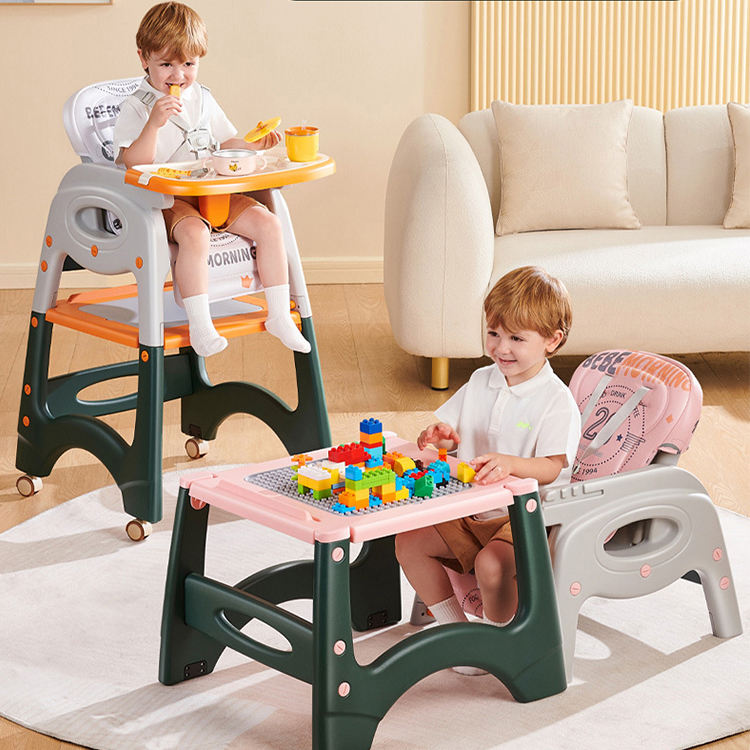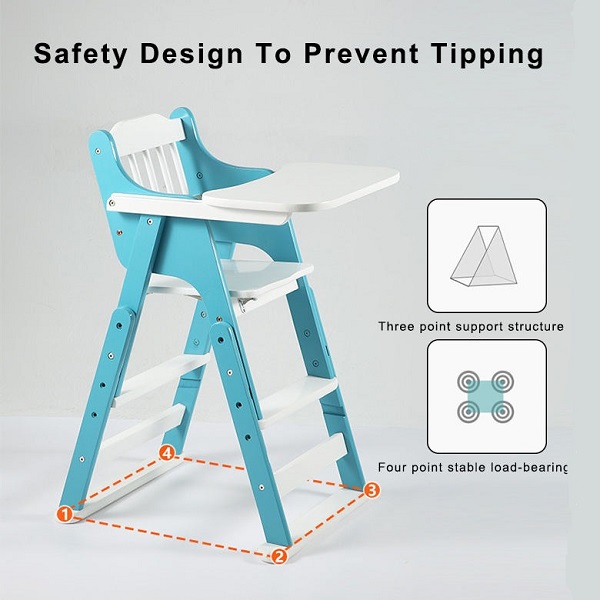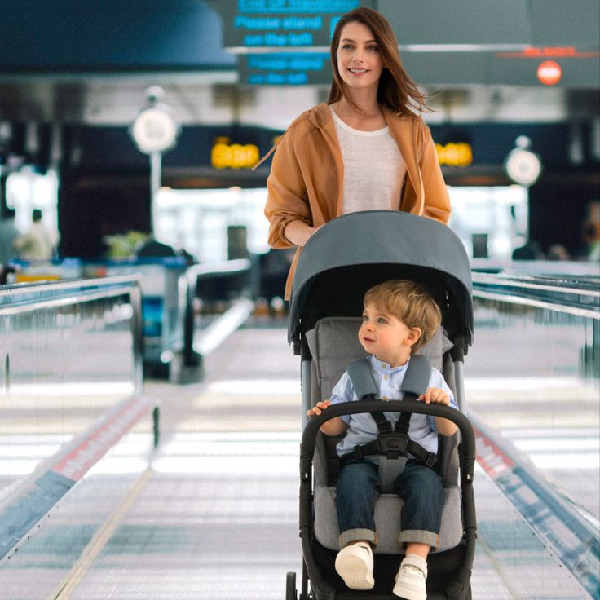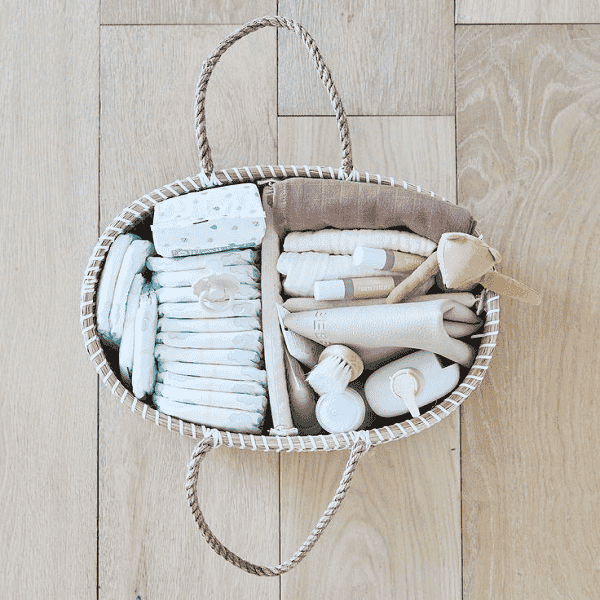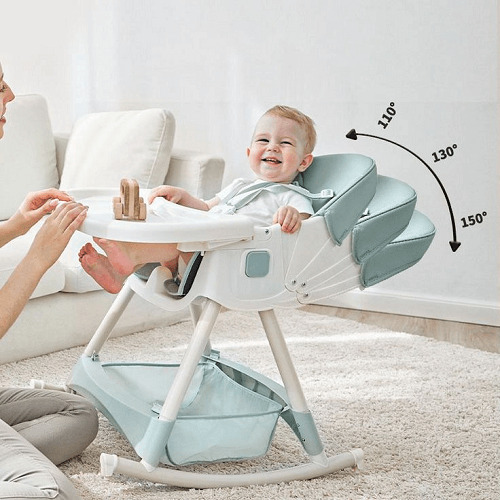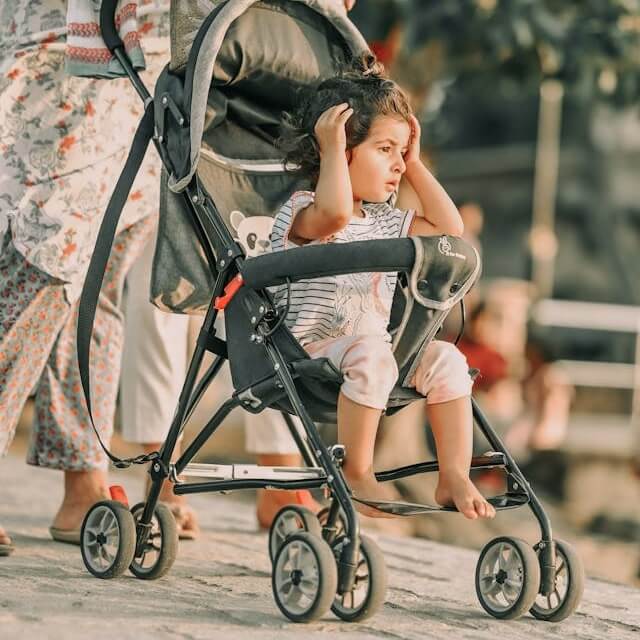A high chair is an essential piece of furniture for parents with young children. However, many parents wonder when it is appropriate to introduce their little ones to a высокий стульчик.
In this article, we will delve deeply into matters concerning this kind of chair, aiming to provide comprehensive insights into this baby furniture. Our goal is to assist you in better understanding it and how it contributes to the scientific and healthy growth of your children.
So, let’s dive in and find out when your baby can begin sitting in a highchair.
What is the Purpose of a High Chair?
Highchairs for babies serve several practical applications in daily life, making them indispensable tools for parents and caregivers raising infants and toddlers.
Meal Times: Baby feeding chairs provide a designated space for babies and toddlers to sit while eating. The elevated position of the high chair also brings the child closer to the dining table, facilitating interaction during family meals.
Feeding Independence: As children transition from being fed by caregivers to self-feeding, this chair offer a supportive environment where they can explore and interact with food at their own pace. The secure seating provided by high chairs allows children to practice using utensils and developing essential motor skills necessary for self-feeding.
Playtime and Activities: With adjustable trays and comfortable seating, high chairs provide a convenient spot for babies to engage in various activities, such as arts and crafts, sensory play, or interactive toys.
Advantages of Using a High Chair for Babies
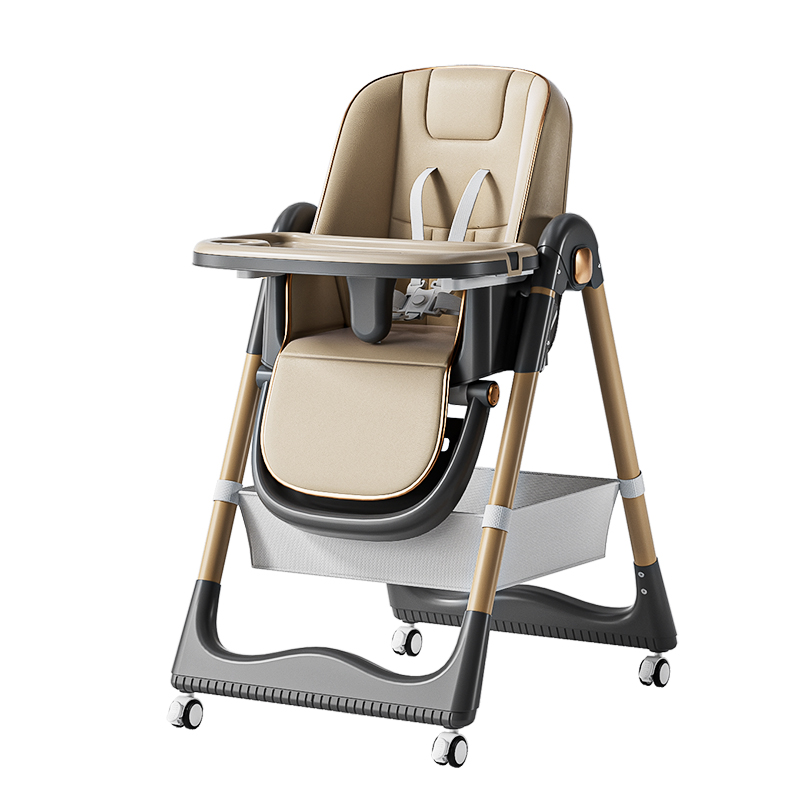
1. Safety and Security
High chairs are designed to securely contain children in an elevated seating position, reducing the risk of falls or injuries during meal times. The height keeps children at a safe distance from potential hazards on the ground, such as pets or other household items.
Most kids high chairs are equipped with harness straps that secure the child in place, preventing them from standing up, leaning too far forward, or sliding out of the chair, keeping the child safely contained and supported while seated.
2. Promotion of Feeding Independence
The chairs provide a designated space for babies to engage in meal times, offering them the opportunity to experiment with self-feeding. With a supportive environment and easy access to food, babies can gradually learn to use utensils, grasp finger foods, and feed themselves independently.
Babies can practice feeding themselves at their own pace, boosting their confidence and self-esteem as they master new skills and navigate the dining experience independently.
3. Elevated Seating Position
The elevated seating position of infant high chairs brings babies closer to the dining table. Sitting at the dining table with caregivers and siblings fosters a sense of inclusion and belonging, encouraging babies to engage in conversation, mimic eating behaviors, and learn from observing others.
4. Optimal Posture and Ergonomics
Baby high chairs feature a supportive backrest that helps maintain the natural curvature of the baby’s spine, promoting proper alignment and reducing strain on the back muscles. Many high chairs offer adjustable height settings to accommodate babies of different ages and sizes.
Some high chairs are equipped with a built-in footrest that allows babies to rest their feet comfortably while seated. A footrest helps promote proper lower body alignment, reduces pressure on the thighs, and encourages a neutral spine position.
The ergonomic seat contours help distribute weight evenly, reducing pressure points and ensuring that babies remain comfortable and well-supported throughout the meal.
5. Versatility Beyond Meal Times
With a tray or tabletop surface within reach, children can explore their creativity through drawing, painting, or crafting projects while seated comfortably in the high chair. This setup minimizes mess and allows caregivers to supervise the activity closely.
Caregivers can attach toys or activity trays to the high chair to provide entertainment and stimulation for the child. Interactive toys such as rattles, teethers, or musical toys can engage babies’ senses and promote sensory development while seated in the high chair.
Caregivers can use the high chair tray as a surface for educational materials such as books, flashcards, or learning toys. Engaging in simple counting, color recognition, or shape sorting activities while seated in the high chair.
Is It Safe to Leave a Child in a High Chair?

While baby feeding chairs are designed with safety in mind, it is important to never leave a child unattended while sitting in one. If a child is left alone in a chair, the following dangerous accidents may occur:
- Risk of Falls: The chairs elevate children to a height where they may be at risk of falling if left unattended. Even with safety harnesses and straps, a child can still wiggle out or attempt to climb out of the chair.
- Choking Hazards: Babies and toddlers are naturally curious and may try to reach for objects or food items within their reach while in the high chair. This increases the risk of choking if they put small objects or food items into their mouths without supervision.
- Potential Strangulation: Loose clothing or straps on clothing can pose a strangulation hazard if they become entangled in the high chair or its components.
- Food-related Risks: Loose clothing or straps on clothing can pose a strangulation hazard if they become entangled in the chair or its components.
Accidents can happen in an instant, always ensure that your baby is securely fastened in the high chair and within your line of sight.
At What Age Can a Baby Start Using a High Chair?
Generally, babies can begin using a highchair between the ages of four to six months. At this stage, most infants have gained sufficient head and neck control to sit upright with minimal support. However, the exact age at which a baby can start using a high chair may vary depending on their individual development and readiness.
1. Sitting Up Independently: Your baby should be able to sit up on their own without support for an extended period.
2. Good Head Control: Your baby should be able to hold their head steady and upright without excessive wobbling.
3. Interest in Solid Foods: If your baby is showing signs of readiness for solid foods and is eager to participate in meal times, they may be ready to transition to a high chair. This can include reaching for food, opening their mouth when offered a spoon, or showing curiosity about what others are eating.
4. Ability to Hold Objects: Your baby should have developed the ability to grasp and hold objects, such as toys or utensils.
How to Make a Baby Sit on a High Chair?
It’s common for babies to initially resist sitting in it, especially if they’re unfamiliar with the experience or if they’re going through a phase of exploring their independence. Some babies may feel anxious or fearful about being confined to a high chair, particularly if they’re separated from their caregivers or if they’ve had negative experiences in similar situations.
Resistance can manifest in various ways, such as fussiness, crying, squirming, or trying to climb out of the chair.
Introducing your baby to a baby feeding chair can be a gradual process to help them become comfortable with the new environment. Here are some steps to help make the transition smooth and enjoyable for both you and your baby:
- Introduce the High Chair Gradually: Place the chair near the dining table or in a familiar area of the house where your baby spends time. Allow your baby to explore it by touching and playing with it while supervised.
- Use Engaging Toys and Activities: Place a few of your baby’s favorite toys or activities on the high chair tray to entice them to sit in it.
- Start with Short Sessions: Begin by placing your baby in the high chair for short periods, gradually increasing the duration as they become more comfortable. Use meal times as an opportunity to introduce your baby to the high chair, starting with small amounts of food or snacks to keep them engaged.
- Offer Distractions and Entertainment: Sing songs, play games, or engage in interactive activities to keep your baby’s attention focused and prevent boredom or restlessness.
- Model Behavior: Set a positive example by sitting at the table with your baby during meal times. Your baby will be more likely to feel comfortable and confident in the high chair if they see you sitting nearby and enjoying the same activities.
How Long Can a Baby Sit in a High Chair?
Younger babies, such as those between 6 to 8 months old, may be able to sit for shorter periods, typically ranging from 15 to 30 minutes at a time. As babies grow older and their sitting skills improve, they may gradually be able to sit in the chair for longer durations.
If your baby becomes fussy, restless, or uncomfortable, it’s important to take breaks and allow them to stretch, move around, or change positions to prevent discomfort or irritability.
During meal times, aim for shorter sitting periods to accommodate your baby’s attention span and appetite. Allow your baby to eat at their own pace and stop when they show signs of fullness or disinterest.
It’s important to listen to your baby’s cues and respond to their needs accordingly. If your baby shows signs of discomfort, restlessness, or fatigue while sitting in the chair, it’s best to take a break and allow them to rest or engage in other activities.
How to Use a High Chair Safely?
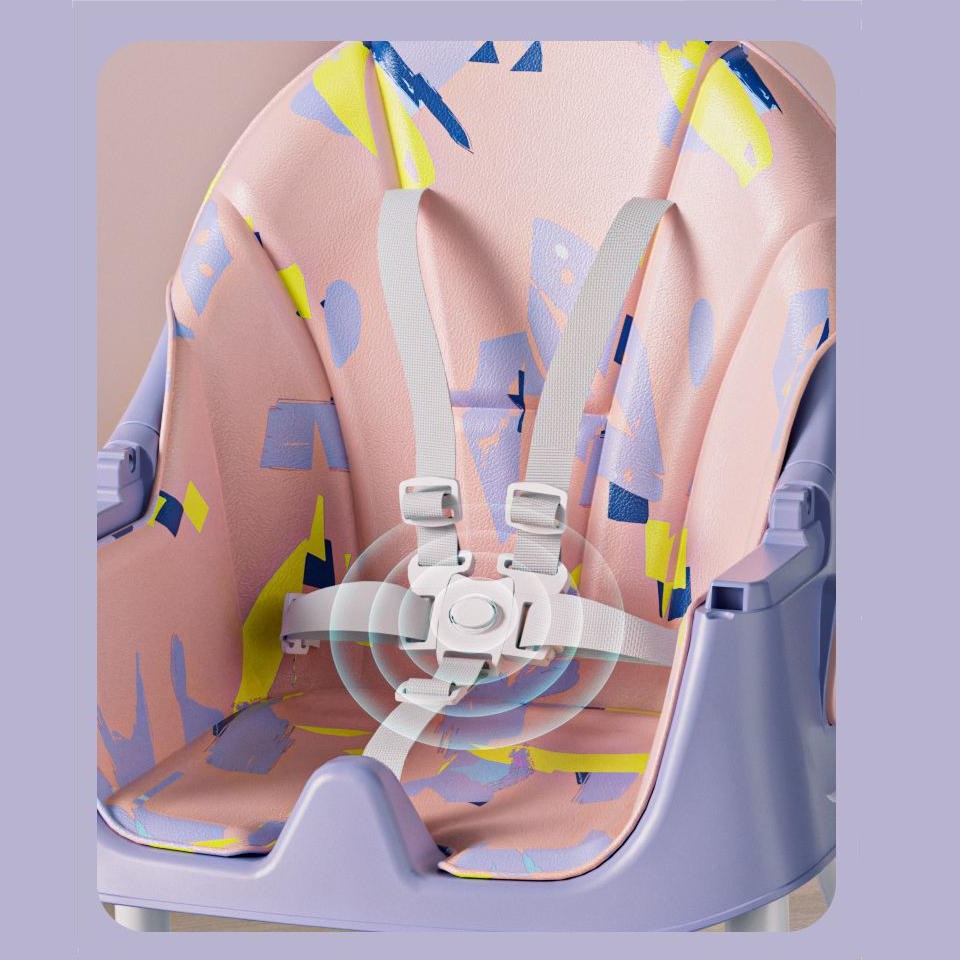
Ensure Proper Seating Position: Position your baby in the highchair so that its back is straight and its bottom is pushed back against the seat. Avoid allowing your baby to slouch or lean forward excessively, as this can strain their spine and lead to discomfort.
Adjust the High Chair’s Settings: Adjust the height, recline, and footrest settings to ensure that your baby’s feet are resting flat on the footrest and their knees are at a 90-degree angle. This helps promote proper posture and prevents dangling feet, which can lead to discomfort and poor circulation.
Secure Harness Straps: Always use the harness straps provided and fasten them securely around your baby’s waist and between their legs. Make sure the straps are adjusted snugly to prevent your baby from sliding or slipping out of the chair.
Mind the Gap: Be mindful of any gaps or spaces between the seat and tray, as well as between the seat and the sides of the high chair. Ensure that your baby’s fingers, toes, or limbs cannot become trapped or pinched in these gaps.
Attend to Sibling Interactions: If you have multiple children using high chairs, supervise their interactions closely. Discourage climbing or leaning on each other’s chairs, and ensure that each child has their own designated seating space.
Position Safely: Place the high chair on a flat, stable surface away from hazards such as stoves, countertops, or table edges. Avoid positioning it near cords, curtains, or other items that your baby could reach and pull on.
What Type of High Chair Should You Choose?
There are several types of high rated high chairs available on the market, each with its advantages, disadvantages, and suitability for use. Here are some common types:
1. Traditional High Chair
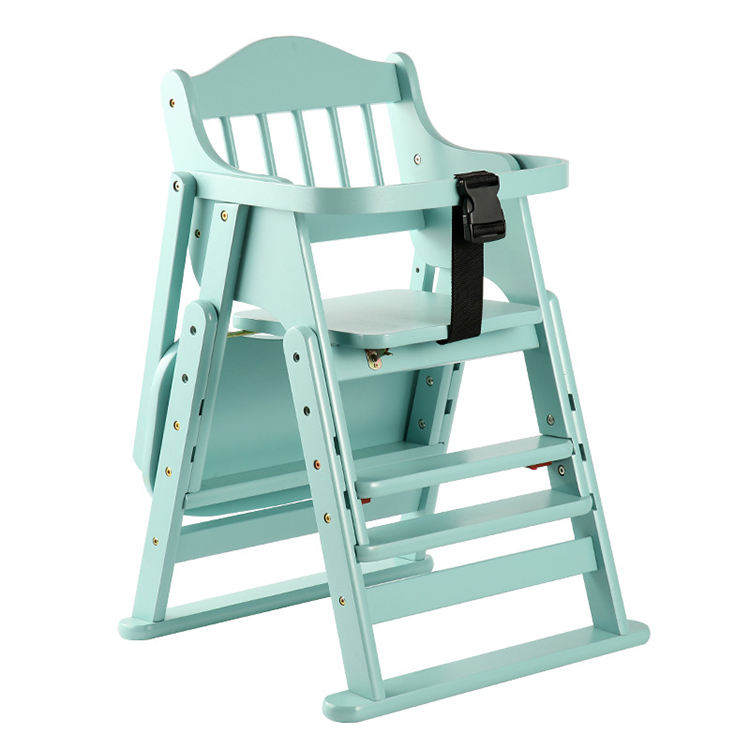
Преимущества: Traditional high chairs typically feature a stable frame, adjustable height, and removable tray for easy cleaning.
Disadvantages: This type of chair can take up significant space and may not be as portable or compact as other options. They may also lack some of the additional features found in more modern high chair designs.
Suitability: It is suitable for families with ample space in their dining areas and who prioritize stability and durability.
2. Convertible High Chair
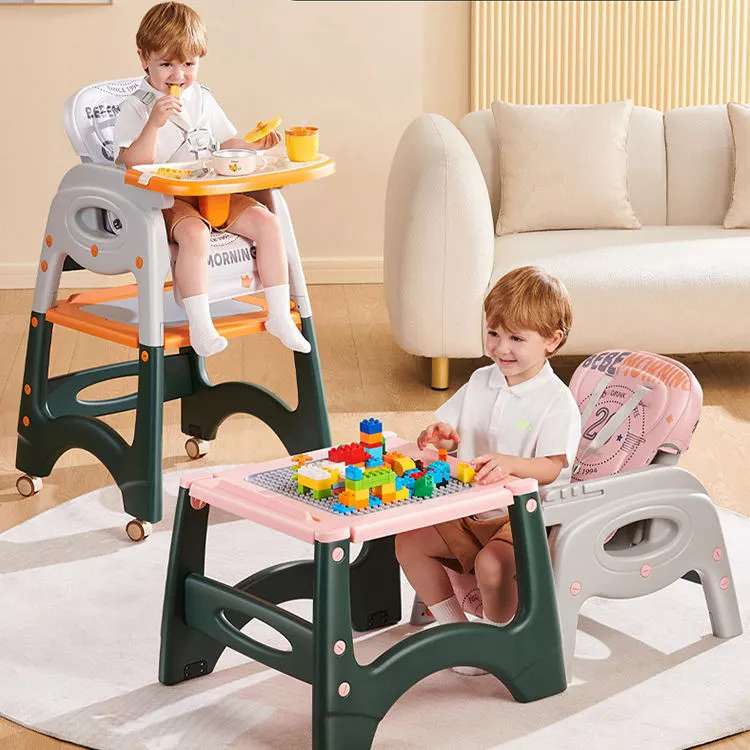
Преимущества: Convertible high chairs can adapt to your child’s changing needs and grow with them from infancy through toddlerhood. They typically transform from a high chair into a booster seat or even a regular chair, extending their usefulness over time.
Disadvantages: Convertible high chairs may be more expensive upfront compared to other options. They may also have more complex assembly and conversion processes, requiring additional time and effort.
Suitability: It is ideal for families looking for a long-term seating solution that can accommodate their child’s growth and development.
3. Booster Seat
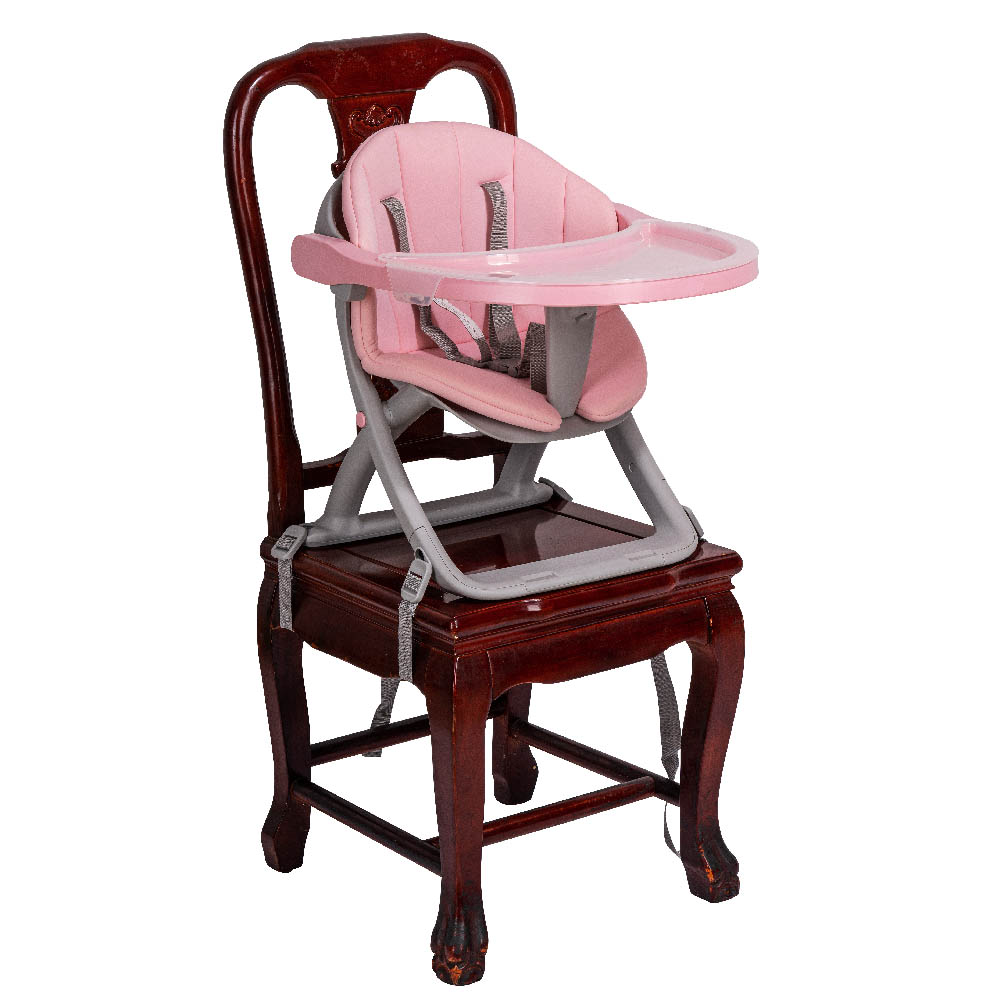
Преимущества: Booster seats are portable, lightweight, and easy to transport, making them ideal for travel or dining out. They can be secured to a regular dining chair to elevate your child to the appropriate height for meal times.
Disadvantages: Booster seats may not provide as much support or stability as traditional high chairs, especially for younger babies who require more containment. They also do not typically come with trays, so you may need to use a separate tray or table for meals.
Suitability: Booster seats are suitable for families who prioritize portability and versatility, as well as those who frequently dine out or travel with their child.
4. Hook-On High Chair
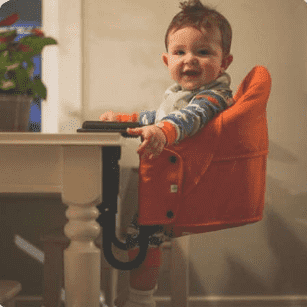
Преимущества: Hook-on high chairs attach directly to the edge of a table or countertop, saving space and providing a convenient seating option for babies and toddlers. They are portable, easy to clean, and suitable for use in various settings.
Disadvantages: It may have weight or size limitations, restricting their use to certain types of tables. They also require a stable and secure surface to attach to, which may not be available in all situations.
Suitability: It is suitable for families with limited space or who frequently dine out, as well as those looking for a portable and easy-to-use seating solution.
5. Foldable High Chair
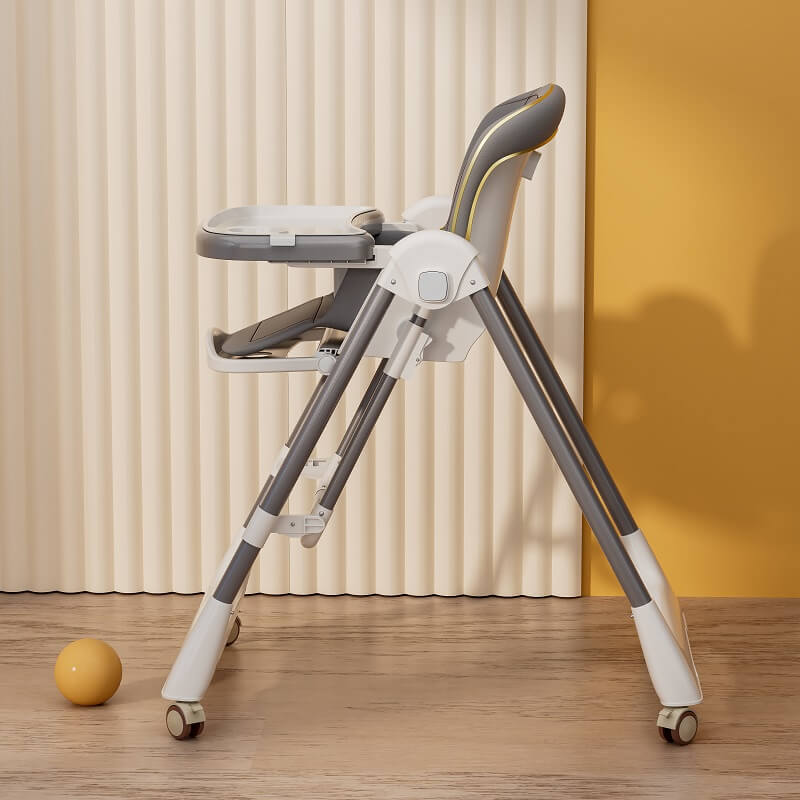
Преимущества: Foldable high chairs can be folded flat for convenient storage or transport, making them ideal for smaller living spaces or travel. They typically offer similar features and functionality to traditional high chairs but with the added benefit of space-saving design.
Disadvantages: Foldable high chairs may sacrifice some stability or durability compared to non-foldable options. They may also have fewer adjustable features or additional accessories.
Suitability: It is suitable for families with limited space or who need a portable seating option for travel or visiting friends and family.
6. Space-Saving High Chair
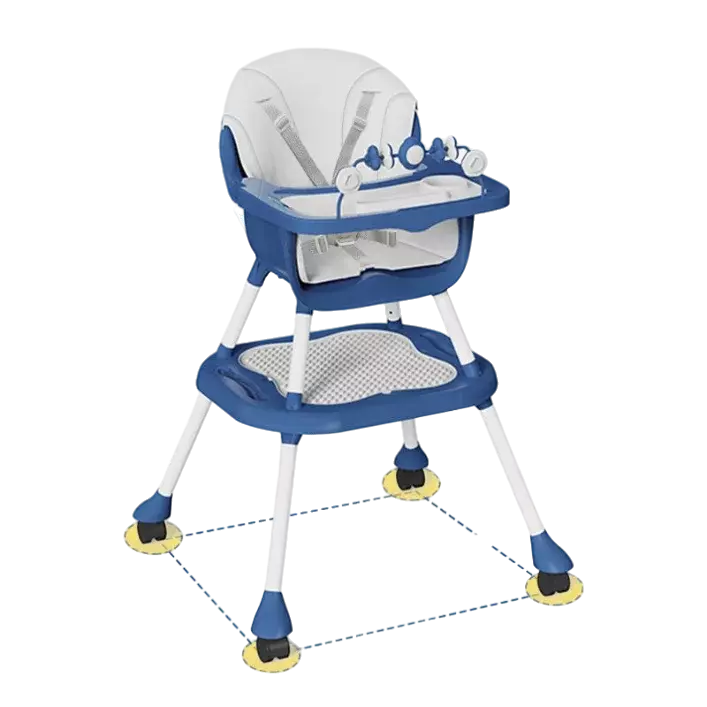
Преимущества: These types of chairs are designed to take up minimal space, making them ideal for small kitchens or dining areas.
Disadvantages: It may sacrifice some features or adjustability found in larger models. They may also have weight or size limitations, restricting their use for larger or older children.
Suitability: It is suitable for families with limited space or who need a high chair that can be easily stowed away when not in use.
7. Multi-Function High Chair
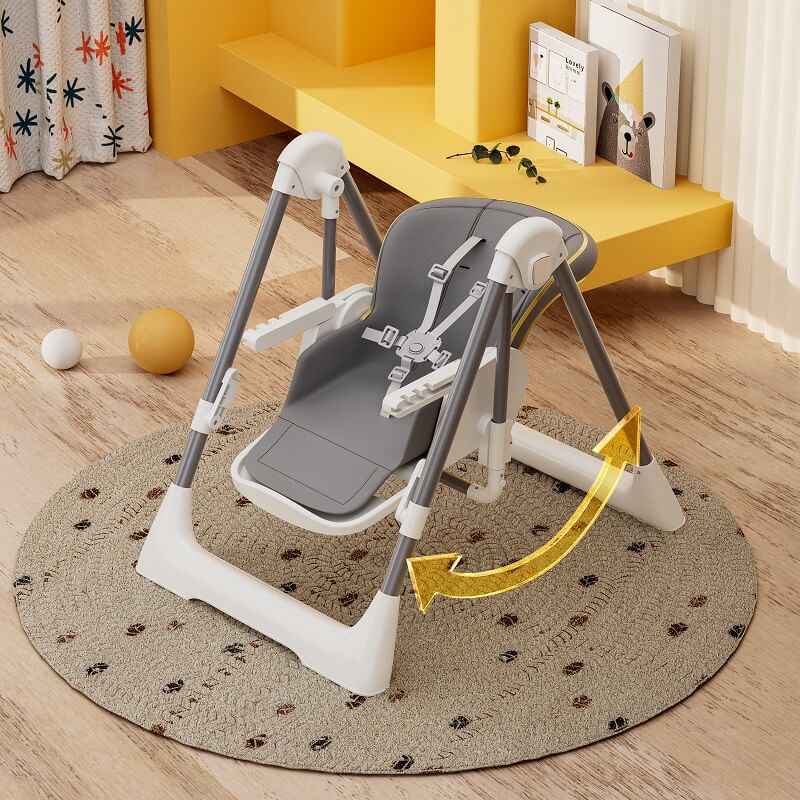
Преимущества: Multi-function high chairs combine the features of a traditional high chair with additional functions such as rocking, reclining, or vibrating capabilities. They may also include built-in storage compartments or entertainment features.
Disadvantages: It may be more expensive than standard models due to their additional features. They may also require more maintenance and care to ensure proper functioning.
Suitability: It is suitable for families looking for added convenience and versatility in their high chairs. They can be particularly beneficial for soothing fussy babies or providing entertainment during meal times.
8. Wooden High Chair
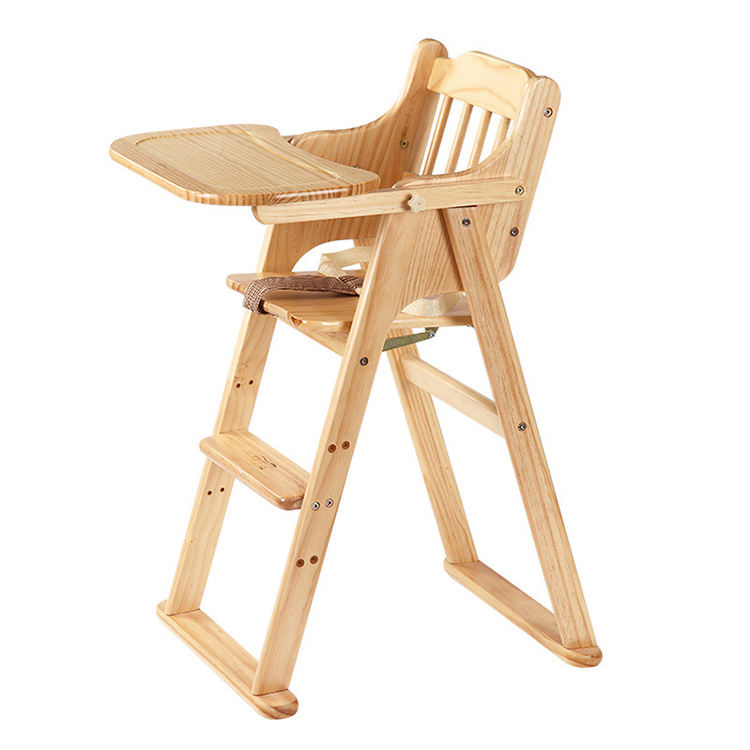
Преимущества: Деревянные стульчики для кормления offer a classic and timeless look that complements many home decor styles. They are typically sturdy, durable, and easy to clean.
Disadvantages: Wooden high chairs may be heavier and more cumbersome than other materials, making them less portable or easy to move around. They may also require periodic maintenance such as re-staining or re-sealing to maintain their appearance and integrity.
Suitability: Wooden high chairs are suitable for families who prioritize durability, aesthetics, and eco-friendliness.
9. Adjustable High Chair

Преимущества: Adjustable high chairs offer multiple height and recline positions to accommodate your child’s growth and development.
Disadvantages: Adjustable high chairs may be more complex to assemble and adjust compared to fixed-height models. They may also be more expensive due to their additional features and functionality.
Suitability: Adjustable high chairs are suitable for families seeking versatility and longevity in their high chair.
FAQs About High Chairs
Q: Can I use a high chair for my newborn?
A: It is not recommended for newborns as they do not have sufficient head and neck control. It is best to wait until your baby has gained enough strength and stability before introducing a high chair.
Q: Are wooden high chairs safer than plastic ones?
A: The safety depends on its design and construction rather than the material. Both wooden and plastic high chairs can be safe if they meet the required safety standards and guidelines.
Q: Can I use a high chair without the tray?
A: The tray provides a convenient surface for feeding and playing. While it is possible to use a high chair without the tray, it may limit the functionality and convenience of the chair.
Q: When should I stop using a high chair?
A: The age at which a child no longer needs a high chair varies. Once your child can comfortably sit at the table and reach the table surface without assistance, you can consider transitioning to a regular chair.
Q: Are there any alternatives to traditional high chairs?
A: Yes, there are alternative seating options available for babies and toddlers, such as floor seats, baby seats, or baby chairs that provide support and stability for sitting. These options may be suitable for families with limited space or who prefer a more minimalist approach to seating.
Рекомендуемые статьи по теме:


